The following is a report issued to the Ohio University Board of Trustees at their meeting this Thursday-Friday at the Chillicothe campus. It was compiled by OHIO track alumni.
To the Ohio University Board of Trustees:
At the Ohio University athletics executive committee meeting on Nov. 1, 2006 in Columbus, Ohio a plan was presented that recommended the dissolution of selected sports at Ohio University in order to address three key issues: Finances, Title IX, and Student-Athlete Welfare. Fundamental elements of this plan were flawed or misrepresented as outlined below.
Financial: Balancing End of Year fund balance
1.) At the executive committee meeting three options were presented for the dissolution of sports at Ohio University (see attachments). The intent of the dissolution was to stabilize the EOY fund balance from it’s current negative trend (with losses of over $1 million per year). Option 2 was chosen, the only option which continues the negative trend and adds another $1.2 million in debt by FY 2010. Option 1 and Option 3 both stabilized the EOY fund balance and produced a slight gain by FY 2010. It is fiscally irresponsible for the athletic department to chose Option 2 considering the departments state of fiscal emergency and the unlikelihood of substantially increased revenues in the near future. Either Option 1 or Option 3 should have been chosen.
2.) The loss of men’s track & field will actually result in a loss of direct revenue for Ohio University. The NCAA Sports Sponsorship Fund contributes $22,000 to a University for each sport it offers above the NCAA minimum number (16) of sports required to qualify as Div. I-A in football. The operating budgets for men’s indoor and outdoor track are well below this mark. Each sport (both Indoor and Outdoor) has received the following budgets for the last three years:
FY05 - $12,588 FY06 - $21,276 FY07 - $14,166
These budget figures do not include coaching salaries because there can be no reduction in track coaching staff, even with the elimination of Men’s Indoor and Outdoor Track. The NCAA recommends three full-time coaches for women’s track/cross country and three full-time coaches for men’s track/cross country and Ohio University is currently at 1/3 of that total number – hence there can be no reduction in staff because the women’s team is being retained. These figures also do not include scholarship funding because all of the Men’s Track & Field scholarship funds were needed to fund the remaining sport of Men’s Cross Country. At Ohio University the budget and scholarship funds for Men’s Indoor & Outdoor Track & Field and Men’s Cross Country have always been combined. This is common practice at most NCAA institutions, but there was no mention by the Athletics Executive Committee of the fact that funding for both scholarships and operating budget for the remaining sport of Men’s Cross Country would represent an additional expense that would lessen the amount of total savings to the EOY fund balance.
3.) The Projected Cost Savings by Option (diagram) and Projected Fund Balance by Option (diagram) presented by Mr. Kirby Hocutt and Mr. William R. Decatur at the Executive Committee Meeting (Nov. 1, 2006) are misleading because they imply that there will be cost savings and a reduction in expenses by eliminating either Men’s Indoor and Outdoor Track and Field. This is simply not true. All of the cost savings and reduction in expenses comes from the elimination of Women’s Lacrosse ($479,897 – salaries included) and Men’s Swimming and Diving ($40,975 – salaries not included). As outlined above, the loss of Men’s Indoor and Outdoor Track & Field actually leads to a loss of revenue for Ohio University. With the elimination of financial issues as justification for the dissolution of Men’s Indoor and Outdoor Track & Field the Executive Committee attempts to use Title IX as the other justification. That issue is addressed below under Title IX.
Title IX:
1.) According to the Office for Civil Rights, a federal organization under the US Department of Education, there is “nothing in Title IX that requires the cutting or reduction of teams in order to demonstrate compliance with Title IX, and that the elimination of teams is a disfavored practice. It is contrary to the spirit of Title IX for the government to require or encourage an institute to eliminate athletic teams.” Therefore, even the federal government, who mandates compliance with Title IX, emphatically disapproves of the elimination of sports to maintain compliance. Myles Brand, the President of the NCAA, said recently: “I certainly hope no University cuts sports to comply with Title IX. There are always alternatives. The NCAA is always ready and able to work with an athletics department to identify acceptable alternatives to cutting sports. It should not be the case that men’s participation opportunities are diminished to comply with Title IX.”
Ohio University athletic department officials made no attempt to contact anyone at the NCAA before deciding on the dissolution of sports.
2.) In terms of scholarship money and gender equity in coaching staff the ‘net’ loss of the dissolution of all four sports will be 12 full equivalency scholarships (designated for female athletes only) and two full-time coaching positions (both occupied by women). In terms of the athletic departments budget women’s athletics will now receive 31% of the total budget instead of the 32.7% of the budget they received before the dissolution of the four sports. These actions certainly do not represent continued compliance with Title IX for Ohio University.
3.) Recommendations from report by Lamar Daniels, Inc. (Title IX consultant) for Ohio University in May, 2006 stated that there were many areas of concern for Ohio University, two of which were availability of coaches and recruiting for female student-athletes. Of the three new full- time assistant coaches positions created for FY 07, one was for Men’s wrestling, a sport for male participants only. This is a direct violation of the recommendations by Lamar Daniel. It is questionable as to why an athletic department in a state of fiscal emergency and out of compliance with Title IX coaching availability would create new full-time staff positions that serve male athletes only.
4.) The Executive Athletic Committee did not follow the recommendations from Lamar Daniels, Inc. concerning which sports to eliminate, if necessary.
5.) During the past year Head Men’s and Women’s Track & Field/Cross Country Coach Clay Calkins offered on three occasions to Ohio athletic department administrators to voluntarily allow the dissolution of Men’s Indoor Track & Field. He also asked if roster limitations could be employed for the remaining sports of Men’s Cross Country and Men’s Outdoor Track and Field in an effort to save a viable program with a chance for success in the future. Each time he was told “that it was not necessary at this time”. The proposal outlined in appendix A demonstrates that Title IX compliance can be satisfied by eliminating Men’s Indoor Track & Field, preserving Men’s Outdoor Track & Field, and instituting roster limitations to meet proportionality between student-athletes and the general student body. Why was this option never allowed to be brought to the table?
Student-Athlete Welfare:
1.) At the executive committee meeting operating expenditures were presented for all Ohio University sports to demonstrate that Ohio sport teams were dramatically under-funded when compared with other Mid-American Conference and Division I-A schools nationwide. This information was from FY 05 (July 1st, 2004 to June 30th, 2005) and is outdated. It could be construed from the FY 05 data that Ohio University athletic teams are tremendously under-funded and that the dissolution of sport teams is the only option available for providing more operating budget for remaining teams. Instead, the 2006 Division I Financial Report (July 1st, 2005 – June 30th , 2006) should have been used for the study because it shows significant changes from the FY 05 data. It is of particular interest to note that select sports teams at Ohio University received large increases in their FY 06 budgets which moved them to the top of the Mid-American Conference, as well as top half in the country (see attachment).
For example Football received a 279.3% increase in their operating budget during the past two seasons, moving the program to 2nd in the MAC in terms of operating budget. The FY06 operating budget for Ohio University Football is $197,706 more than the entire men’s athletics operating budget (six sports) for Central Michigan University. The Ohio Women’s Volleyball Programs FY 06 operating budget of $133,670 (1st in the MAC) was twice the MAC conference average ($58,795). Some of this increase for particular sports is justifiable (i.e.- Football team to win more games, Volleyball team to travel to California in pre-season to compete against Top-20 ranked competition, etc.). However, it seems suspect that some Ohio teams jumped to the top of the MAC in terms of budget while others that were also highly successful (i.e. -Women’s Cross Country – 2006 MAC Championship with new record-low score for 12 team field, also ranked 47th out of 323 teams for NCAA Div. I) yet remains 11th of 12 in their FY06 and FY07 operating budgets compared with the rest of the MAC.
Despite the gloomy outlook of FY05 data presented at the Athletics Executive commmittee meeting on Nov. 1st it would seem that the ‘quality of athletic experience’ students receive at Ohio University based upon FY06 and FY07 data is in fact very good, depending upon the sport. And once again, the fact remains that in a current state of fiscal crisis for the athletic department such extraordinary budget increases for select sports seen unwarranted, particularly when accompanied with the dissolution of other sports at Ohio University.
Other important aspects not considered in this “comprehensive” study:
Diversity
1.) According to the Ohio Board of Regents’ 2006 Performance Report:
“Ohio University is the state’s least racially diverse college and offers one of the lowest percentages of financial aid among similar schools in Ohio”. The Ohio University men’s indoor and outdoor track currently has 15% minority participants, third highest of all sports at Ohio. Historically speaking, the Ohio University’s Men’s Track Team always been one of the top three varsity sports in terms of offering opportunities for minorities to participate in a varsity collegiate sport and earn collegiate scholarships. Ohio University has a proud legacy of successful minority athletes. Les Carney, an athlete coached by legendary Ohio Coach Stan Huntsman, became Ohio University’s first Olympian and only African-American Olympic medalist in 1960. Elmore Banton was the first African-American to win a NCAA cross country title while a student-athlete in 1964. Banton later coached Ohio’s men’s and women’s track & field/cross country teams for twenty-three years. Are these not the same type of goals that current Ohio University President Roderick J. McDavis envisions accomplishing with the Urban Scholars program? Despite the “hundreds of hours of comprehensive research” that went into the Athletics Executive Committee plans, the word ‘diversity’ is not referred to on a single occasion.
2.) Another new program created by Pres. McDavis is the Appalachian Scholars program. The track and field team has provided more local high school athletes an opportunity to participate on a varsity collegiate sports team than all other sports at Ohio University combined. During the past five years there have been a total of six athletes participate on the track team, representing Athens, Alexander, Federal Hocking, and Trimble High Schools - four of the five high schools located in Athens County. In addition during the past five years there have been sixteen athletes representing such nearby schools as Belpre, Logan, Eastern (Reedsville), Middleport (Ohio Valley Christian), River Valley, (Cheshire), Warren (Vincent), and other schools within a 45 minute drive of Athens. In addition, the current part-time coaches for the women’s and men’s teams are graduate of Ohio University and former varsity athletes of the Men’s Track & Field team. One coach is a graduate of Vinton County High School where he was the inaugural inductee into the schools Athletic Hall of Fame. The other coach serves as a junior high math teacher for the Trimble Local School District. Both of these coaches are paid less than $10,000 per year (less than the bonus paid to Head Football Coach for winning the MAC East Division). The permanent loss of such opportunities for Ohio University Men’s Track & Field athletes to become coaches who ‘give back’ to Ohio University constitutes a huge loss for Ohio University.
Again, it seems that Dr. McDavis may not be aware that he already has an Appalachian Scholars program in place that is accomplishing wonderful success, and most likely at a much cheaper cost than the much publicized Urban and Appalachian Scholars Programs.
4.) Student quality seems to be another factor that wasn’t considered in the Executive Committee plans. Eliminating Men’s Outdoor Track & Field will have a detrimental effect on the Men’s Cross Country team. This team, like it’s female counterpart, has the highest cumulative GPA of any sports team (male) at Ohio University. Many of the student-athletes currently on the team would have chosen to attend smaller, more academically oriented schools if not for the opportunity to participate in NCAA Division I athletics and receive a good-quality education at the same time. Some of the student-athletes that participate in both cross country and track & field are among the highest academically performing students for Ohio University as a whole. Most of them would not have attended Ohio University if it were not for the the opportunity to participate in both cross country and track & field. Given the falling retention rates of the past six years are these are these the type of students we should be discouraging from attending Ohio University?
5.) At this point in time it is difficult to quantify the exact value of financial support that Ohio University will lose as a result of the dissolution of Men’s Track and Field. Several hundred alumni can already be documented as stating “They will never give another dime to Ohio University.” Many more have stated that they will not recommend Ohio University to prospective students. An petition recently circulated at the Ohio High School Cross Country/ Track Coaches clinic received over 1000 signatures denouncing the cuts. Men’s Track and Field is the second largest team and has the second largest alumni base (other than football) of any sport at Ohio University. It is also closely inter-related with four sports that are remaining at Ohio University – Men’s Cross Country, Women’s Cross Country, Women’s Indoor Track & Field, and Women’s Outdoor Track & Field. The potential damage to future enrollment at Ohio University as a result off this decision could be considerable. In a time of increasing competition for prospective students this is problematic for the future growth of Ohio University.
Summary
In summary, although a large volume of material was researched and presented during the comprehensive study by the Athletics Executive Committee, significant portions of the data presented were outdated or inaccurate. Consequently, some of the conclusions drawn from it are flawed. It is highly unlikely that anyone on the Athletics Executive Committee could score a cross country meet, let alone understand the complex interrelationship the sport shares with Track and Field in terms of recruiting and development of a successful men’s and women’s cross country program. An internal or external source for such information should have been consulted.
It is also understood that Ohio University Administration and Ohio University Athletic Department Administration are fully charged with the right to make decisions as they see fit concerning such matters, but more input from professionals in the decision making process would better serve the best interests of Ohio University and it’s Athletic Department.
Conclusion
It is recommended that Ohio University consider the precedent set by the Miami University (Ohio) Board of Trustees in 1999. Miami University Athletic Administration decided to eliminate five men’s sports in 1999, including Men’s Indoor and Outdoor Track & Field. Upon further review the Miami University Board of Trustees recommended a reconsideration of the decision and suggested reinstatement of Men’s Outdoor Track & Field only. It turned out to be a good decision for Miami University. It allowed their Men’s Cross Country team to remain competitive in recruiting, both in the MAC and NCAA Div. I, which in turn has allowed Miami to remain competitive in the MAC and NCAA championships. Today the Miami University cross country program is one of the most successful men’s sports at the university, with a 14th place finish in the NCAA Cross Country Championships in 2003 and three individual All-Americans during the last five years. In the case of Ohio University, the reasons for reinstating Men’s Outdoor Track and Field are even more compelling because the programs operating budget is below the NCAA Sports Sponsorship Fund level. In other words, as Ohio’s seventeenth varsity sport it will bring in more money that it loses.
We sincerely hope that Ohio University Board of Trustees will uphold Ohio’s strong tradition of graduation rate performance and provision of social mobility for traditionally underserved groups and recommend reinstatement of Men’s Outdoor Track & Field.
Thursday, February 15, 2007
Subscribe to:
Post Comments (Atom)


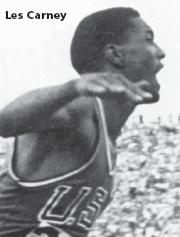



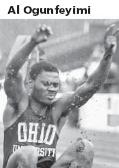


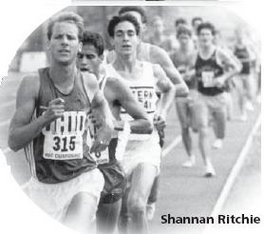

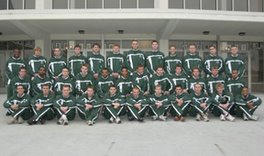


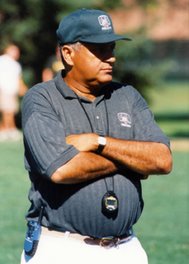




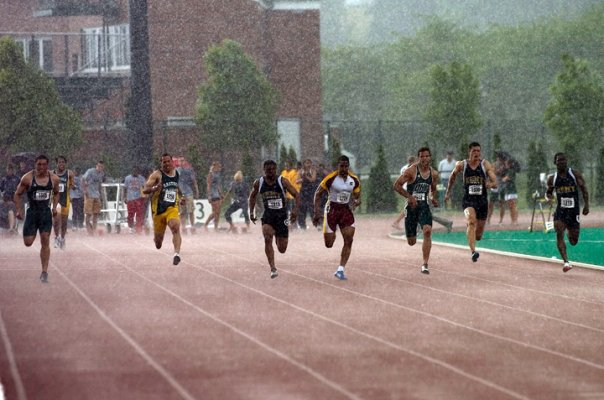
2 comments:
When Ball State did away with men's track and cross country I turned my diploma so that it faced the wall. I also sent a letter to the President and the AD (who has since moved on) saying that I would not be giving that university any more money.
To accompany these drastic cuts, I'm sure we should expect a similar percentage cut in the athletic adminstrative staff and budget.......right?
Of course not! Short-sighted administrators will always take care of their own.
Post a Comment